第51章 9(1)
What has been said of the bladder is equally true of the kidneys.
For these also are wanting in all animals that are clad with feathers or with scales or with scale-like plates; the sea and land tortoises forming the only exception. In some of the birds, however, there are flattened kidney like bodies, as though the flesh allotted to the formation of the kidneys, unable to find one single place of sufficient size, had been scattered over several.
The Emys has neither bladder nor kidneys. For the softness of its shell allows of the ready transpiration of fluid; and for this reason neither of the organs mentioned exists in this animal. All other animals, however, whose lung contains blood are, as before said, provided with kidneys. For nature uses these organs for two separate purposes, namely for the excretion of the residual fluid, and to subserve the blood-vessels, a channel leading to them from the great vessel.
In the centre of the kidney is a cavity of variable size. This is the case in all animals, excepting the seal. The kidneys of this animal are more solid than those of any other, and in form resemble the kidneys of the ox. The human kidneys are of similar shape; being as it were made up of numerous small kidneys, and not presenting one unbroken surface like the kidneys of sheep and other quadrupeds. For this reason, should the kidneys of a man be once attacked by disease, the malady is not easily expelled. For it is as though many kidneys were diseased and not merely one; which naturally enhances the difficulties of a cure.
The duct which runs to the kidney from the great vessel does not terminate in the central cavity, but is expended on the substance of the organ, so that there is no blood in the cavity, nor is any coagulum found there after death. A pair of stout ducts, void of blood, run, one from the cavity of each kidney, to the bladder; and other ducts, strong and continuous, lead into the kidneys from the aorta. The purpose of this arrangement is to allow the superfluous fluid to pass from the blood-vessel into the kidney, and the resulting renal excretion to collect by the percolation of the fluid through the solid substance of the organ, in its centre, where as a general rule there is a cavity. (This by the way explains why the kidney is the most ill-savoured of all the viscera.) From the central cavity the fluid is discharged into the bladder by the ducts that have been mentioned, having already assumed in great degree the character of excremental residue. The bladder is as it were moored to the kidneys; for, as already has been stated, it is attached to them by strong ducts. These then are the purposes for which the kidneys exist, and such the functions of these organs.
In all animals that have kidneys, that on the right is placed higher than that on the left. For inasmuch as motion commences from the right, and the organs on this side are in consequence stronger than those on the left, they must all push upwards in advance of their opposite fellows; as may be seen in the fact that men even raise the right eyebrow more than the left, and that the former is more arched than the latter. The right kidney being thus drawn upwards is in all animals brought into contact with the liver; for the liver lies on the right side.
Of all the viscera the kidneys are those that have the most fat.